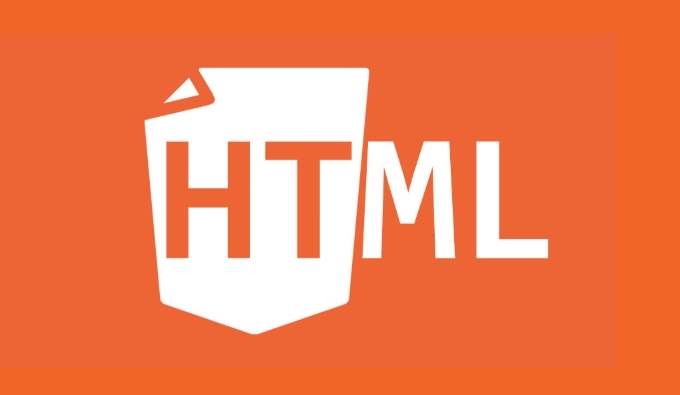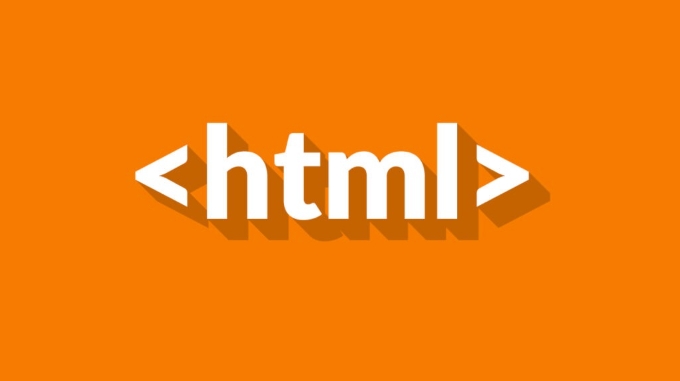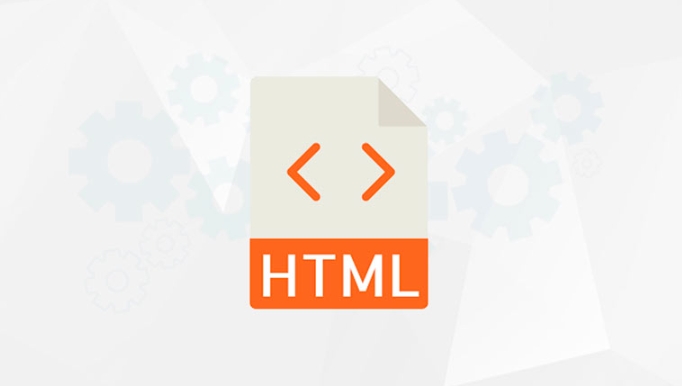 Web Front-end
Web Front-end
 HTML Tutorial
HTML Tutorial
 How to associate captions with images or media using the html figure and figcaption elements?
How to associate captions with images or media using the html figure and figcaption elements?
How to associate captions with images or media using the html figure and figcaption elements?
Jul 07, 2025 am 02:30 AMUse HTML's <figure> and <figcaption> to add caption text to images or media intuitively and semantically. 1. <figure> is used to wrap independent media content, such as pictures, videos or code blocks; 2. <figcaption> is placed as its explanatory text, and can be located above or below the media; 3. They not only improve the clarity of the page structure, but also enhance accessibility and SEO effects; 4. When using it, you should pay attention to avoid abuse, and apply to content that needs to be emphasized and accompanied by instructions, rather than ordinary decorative images; 5. The alt attribute of  cannot be ignored, which is different from figcaption; 6. The figcaption is flexible and can be placed at the top or bottom of the figure as needed. Using these two tags correctly helps to build semantic, easy-to-understand web content.
cannot be ignored, which is different from figcaption; 6. The figcaption is flexible and can be placed at the top or bottom of the figure as needed. Using these two tags correctly helps to build semantic, easy-to-understand web content.

When adding caption text to images or media, using HTML <figure></figure> and <figcaption></figcaption> is a very intuitive and semantic approach. They not only help organize page structure, but also improve accessibility and SEO performance. The key is to understand the purpose and correct way of writing these two tags.

Basic structure: How to connect pictures and explanatory texts
The <figure></figure> tag is used to wrap an independent content block, such as pictures, charts, videos, etc.; while <figcaption></figcaption> is its "title" or "explanation text", which is usually placed in <figure></figure> and can appear in front or behind the content.

For example:
<figure> <img src="/static/imghw/default1.png" data-src="example.jpg" class="lazy" alt="example picture"> <figcaption>This is a brief description of the picture</figcaption> </figure>
In this way, the browser and screen readers will know that this text is a description of the image. You can also place <figcaption> at the top of <figure> and let the caption text be displayed above the picture.

Various media are suitable, not just pictures
Although the most common one is to use it with <img src="/static/imghw/default1.png" data-src="example.mp4" class="lazy" alt="How to associate captions with images or media using the html figure and figcaption elements?" > , <figure> and <figcaption> are also suitable for other types of media, such as audio, video, or code blocks.
For example, embed a video with instructions:
<figure>
<video controls>
<source type="video/mp4">
Your browser does not support video playback.
</video>
<figcaption>This is a demonstration video showing the product usage process</figcaption>
</figure>For example, show a piece of code:
<figure>
<pre class="brush:php;toolbar:false"><code>function helloWorld() { console.log("Hello, world!"); }</code>
<figcaption>Basic JavaScript Sample Code
As long as the content is a "independent unit", you can consider wrapping it with <figure></figure> and adding instructions with <figcaption></figcaption> .
Several details to pay attention to in practical applications
- Don't abuse it : If it's just a normal inline picture (such as the decorative picture in the article), there is no need to use
<figure></figure>. It is more suitable for media content that requires separate emphasis and description. - Semantic priority : These tags are mainly used to enhance document semantics rather than style layout. Although you can use CSS to customize the style, don't force it to apply it for the sake of typography.
- alt text is still important : even if there is
<figcaption></figcaption>, don't forget thealtattribute of<img alt="How to associate captions with images or media using the html figure and figcaption elements?" >. They do differently:altis the alternative text when the image itself is not visible, while figcaption is an additional description. - Flexible location :
<figcaption></figcaption>can be placed at the top or bottom of the inside of<figure></figure>, depending on whether you want it to appear above or below the media.
Basically that's it
Overall, <figure></figure> and <figcaption></figcaption> are a very practical set of tags in HTML that are used to add instructions to media content. Not only do they make the structure clearer, they also help accessibility and search engines identify content intent. Pay attention to semantics and scenes when using them, and don’t overuse them.
The above is the detailed content of How to associate captions with images or media using the html figure and figcaption elements?. For more information, please follow other related articles on the PHP Chinese website!

Hot AI Tools

Undress AI Tool
Undress images for free

Undresser.AI Undress
AI-powered app for creating realistic nude photos

AI Clothes Remover
Online AI tool for removing clothes from photos.

Clothoff.io
AI clothes remover

Video Face Swap
Swap faces in any video effortlessly with our completely free AI face swap tool!

Hot Article

Hot Tools

Notepad++7.3.1
Easy-to-use and free code editor

SublimeText3 Chinese version
Chinese version, very easy to use

Zend Studio 13.0.1
Powerful PHP integrated development environment

Dreamweaver CS6
Visual web development tools

SublimeText3 Mac version
God-level code editing software (SublimeText3)

Hot Topics
 How do I stay up-to-date with the latest HTML standards and best practices?
Jun 20, 2025 am 08:33 AM
How do I stay up-to-date with the latest HTML standards and best practices?
Jun 20, 2025 am 08:33 AM
The key to keep up with HTML standards and best practices is to do it intentionally rather than follow it blindly. First, follow the summary or update logs of official sources such as WHATWG and W3C, understand new tags (such as) and attributes, and use them as references to solve difficult problems; second, subscribe to trusted web development newsletters and blogs, spend 10-15 minutes a week to browse updates, focus on actual use cases rather than just collecting articles; second, use developer tools and linters such as HTMLHint to optimize the code structure through instant feedback; finally, interact with the developer community, share experiences and learn other people's practical skills, so as to continuously improve HTML skills.
 How do I embed PHP code in an HTML file?
Jun 22, 2025 am 01:00 AM
How do I embed PHP code in an HTML file?
Jun 22, 2025 am 01:00 AM
You can embed PHP code into HTML files, but make sure that the file has an extension of .php so that the server can parse it correctly. Use standard tags to wrap PHP code, insert dynamic content anywhere in HTML. In addition, you can switch PHP and HTML multiple times in the same file to realize dynamic functions such as conditional rendering. Be sure to pay attention to the server configuration and syntax correctness to avoid problems caused by short labels, quotation mark errors or omitted end labels.
 How do I embed video in HTML using the element?
Jun 20, 2025 am 10:09 AM
How do I embed video in HTML using the element?
Jun 20, 2025 am 10:09 AM
To embed videos in HTML, use tags and specify the video source and attributes. 1. Use src attributes or elements to define the video path and format; 2. Add basic attributes such as controls, width, height; 3. To be compatible with different browsers, you can list MP4, WebM, Ogg and other formats; 4. Use controls, autoplay, muted, loop, preload and other attributes to control the playback behavior; 5. Use CSS to realize responsive layout to ensure that it is adapted to different screens. Correct combination of structure and attributes can ensure good display and functional support of the video.
 How do I minimize the size of HTML files?
Jun 24, 2025 am 12:53 AM
How do I minimize the size of HTML files?
Jun 24, 2025 am 12:53 AM
To reduce the size of HTML files, you need to clean up redundant code, compress content, and optimize structure. 1. Delete unused tags, comments and extra blanks to reduce volume; 2. Move inline CSS and JavaScript to external files and merge multiple scripts or style blocks; 3. Simplify label syntax without affecting parsing, such as omitting optional closed tags or using short attributes; 4. After cleaning, enable server-side compression technologies such as Gzip or Brotli to further reduce the transmission volume. These steps can significantly improve page loading performance without sacrificing functionality.
 How has HTML evolved over time, and what are the key milestones in its history?
Jun 24, 2025 am 12:54 AM
How has HTML evolved over time, and what are the key milestones in its history?
Jun 24, 2025 am 12:54 AM
HTMLhasevolvedsignificantlysinceitscreationtomeetthegrowingdemandsofwebdevelopersandusers.Initiallyasimplemarkuplanguageforsharingdocuments,ithasundergonemajorupdates,includingHTML2.0,whichintroducedforms;HTML3.x,whichaddedvisualenhancementsandlayout
 How do I use the element to represent the footer of a document or section?
Jun 25, 2025 am 12:57 AM
How do I use the element to represent the footer of a document or section?
Jun 25, 2025 am 12:57 AM
It is a semantic tag used in HTML5 to define the bottom of the page or content block, usually including copyright information, contact information or navigation links; it can be placed at the bottom of the page or nested in, etc. tags as the end of the block; when using it, you should pay attention to avoid repeated abuse and irrelevant content.
 What is the declaration, and what does it do?
Jun 24, 2025 am 12:57 AM
What is the declaration, and what does it do?
Jun 24, 2025 am 12:57 AM
Adeclarationisaformalstatementthatsomethingistrue,official,orrequired,usedtoclearlydefineorannounceanintent,fact,orrule.Itplaysakeyroleinprogrammingbydefiningvariablesandfunctions,inlegalcontextsbyreportingfactsunderoath,andindailylifebymakingintenti
 How do I use the tabindex attribute to control the tab order of elements?
Jun 24, 2025 am 12:56 AM
How do I use the tabindex attribute to control the tab order of elements?
Jun 24, 2025 am 12:56 AM
ThetabindexattributecontrolshowelementsreceivefocusviatheTabkey,withthreemainvalues:tabindex="0"addsanelementtothenaturaltaborder,tabindex="-1"allowsprogrammaticfocusonly,andtabindex="n"(positivenumber)setsacustomtabbing





